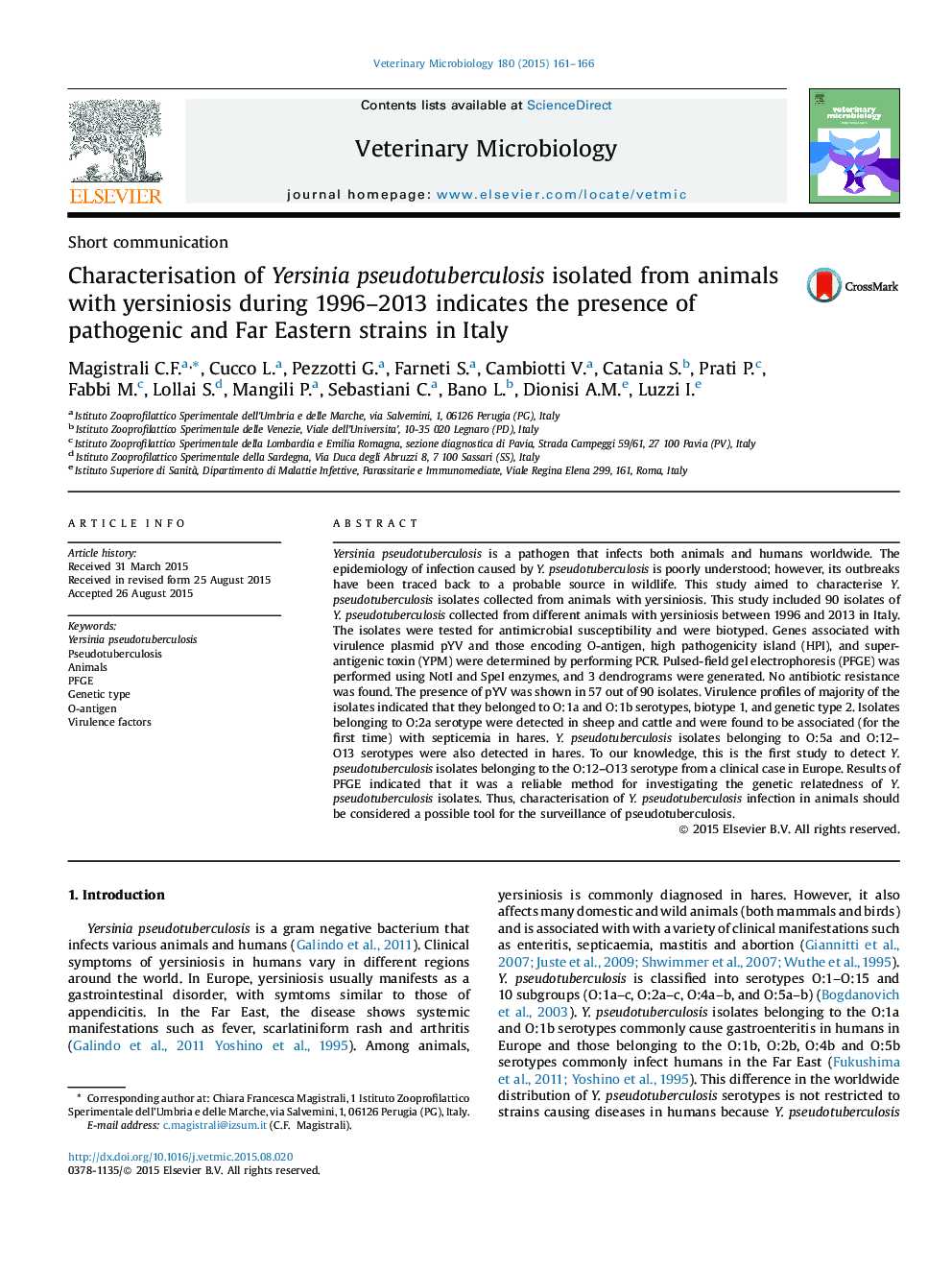| Article ID | Journal | Published Year | Pages | File Type |
|---|---|---|---|---|
| 2466547 | Veterinary Microbiology | 2015 | 6 Pages |
•Y. pseudotuberculosis isolates from yersiniosis in animals were characterised.•Majority of the isolates belonged to O:1 serotype and to genetic type 2.•O:2a, O:5a and O:11–12 isolates were found in cases that occurred in the hare.•Dendrograms generated using PFGE confirmed the epidemiologic links between strains.•Characterisation of isolates from animals can be a reliable tool in surveillance.
Yersinia pseudotuberculosis is a pathogen that infects both animals and humans worldwide. The epidemiology of infection caused by Y. pseudotuberculosis is poorly understood; however, its outbreaks have been traced back to a probable source in wildlife. This study aimed to characterise Y. pseudotuberculosis isolates collected from animals with yersiniosis. This study included 90 isolates of Y. pseudotuberculosis collected from different animals with yersiniosis between 1996 and 2013 in Italy. The isolates were tested for antimicrobial susceptibility and were biotyped. Genes associated with virulence plasmid pYV and those encoding O-antigen, high pathogenicity island (HPI), and superantigenic toxin (YPM) were determined by performing PCR. Pulsed-field gel electrophoresis (PFGE) was performed using NotI and SpeI enzymes, and 3 dendrograms were generated. No antibiotic resistance was found. The presence of pYV was shown in 57 out of 90 isolates. Virulence profiles of majority of the isolates indicated that they belonged to O:1a and O:1b serotypes, biotype 1, and genetic type 2. Isolates belonging to O:2a serotype were detected in sheep and cattle and were found to be associated (for the first time) with septicemia in hares. Y. pseudotuberculosis isolates belonging to O:5a and O:12–O13 serotypes were also detected in hares. To our knowledge, this is the first study to detect Y. pseudotuberculosis isolates belonging to the O:12–O13 serotype from a clinical case in Europe. Results of PFGE indicated that it was a reliable method for investigating the genetic relatedness of Y. pseudotuberculosis isolates. Thus, characterisation of Y. pseudotuberculosis infection in animals should be considered a possible tool for the surveillance of pseudotuberculosis.
